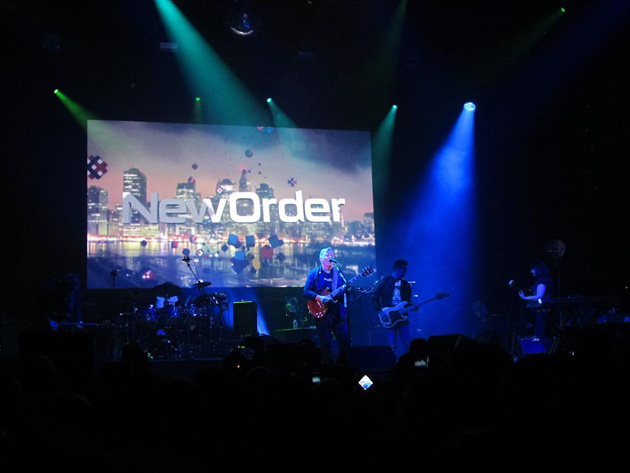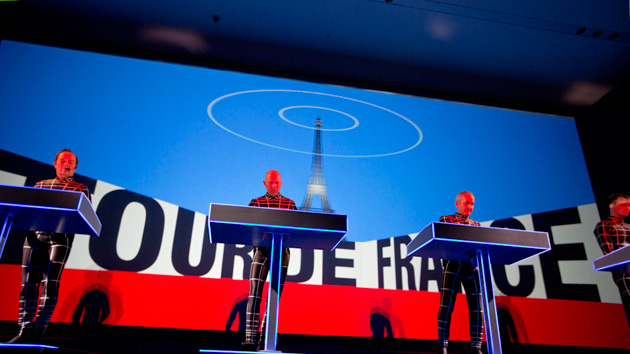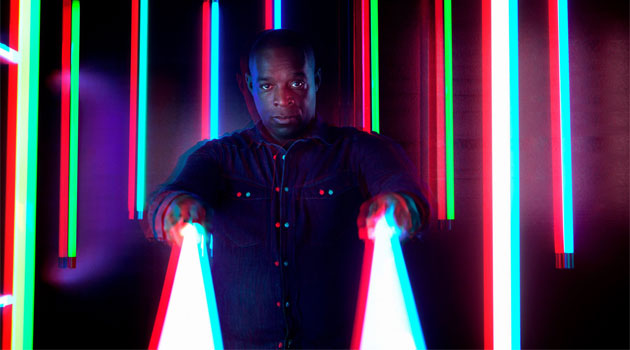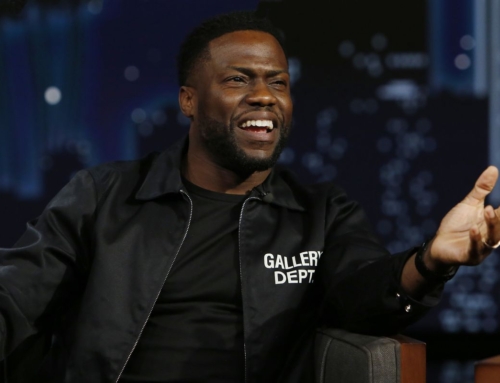With singles released at hyper speed and tours that don’t really let up, can an electronic dance artist truly disappear in today’s musical climate?
Groups disband and make comebacks, like New Order informally taking a break after 1993’s Technique and then reforming in 1998 to release Get Ready a few years later. But New Order, unlike, say, Avicii or Skrillex treading at the top of the DJ Mag list with a constant string of singles and hundreds of DJing gigs per year, have history behind them and a strong fan base, and while their most recent revival, sans original bassist Peter Hook, has yet to result in original material, their back catalog has enough strength to fill a moderately-sized U.S. venue.
 However, “comeback” has varying connotations. For New Order, it’s more along the lines of “We’re still here and we’re touring,” but for a few artists in 2012 and 2013 – notably, Kevin Saunderson’s early project Inner City, Felix da Housecat, and Basshunter – “comeback” means competing for club venues and chart ranks in an environment where, according to DJ/producer Marc Vedo, fans think David Guetta started house music, and the results are varied.
However, “comeback” has varying connotations. For New Order, it’s more along the lines of “We’re still here and we’re touring,” but for a few artists in 2012 and 2013 – notably, Kevin Saunderson’s early project Inner City, Felix da Housecat, and Basshunter – “comeback” means competing for club venues and chart ranks in an environment where, according to DJ/producer Marc Vedo, fans think David Guetta started house music, and the results are varied.
Better to Leave the Past Behind
For certain artists with hits 20-plus years old, an EDM single has turned into a path for briefly getting media attention. Fab Morvan – one half of infamous ‘80s group Milli Vanilli — got on Oprah’s OWN network after putting out a handful of singles with second-rate Dutch house producers in 2013: Most notably, “Mind Over Matter” with producer Dave Damelo, as well as “Now You’re Calling,” “Brown Paper Tracks,” and “Cest Fou.” None of the tracks have blown up the Beatport charts – yet – but Morvan appears to slowly be getting work, even with his tarnished reputation in the early ‘90s and later unsuccessful solo projects, like 2006 funk/soul album Love Revolution.
Corey Hart – known for “Sunglasses at Night” – attempted a comeback through EDM this past fall by collaborating with Chicago producer duo Papercha$er on what’s really a remix of his ‘80s hit. The track, now called “Night Visions (Sunglasses),” got him enough attention for a Billboard interview. Like Morvan, Hart’s EDM experiment gave him brief media exposure – but not enough for anyone to buy the track.
 Beyond the has-beens, however, is attempting to revive something that’s 20 years old a good idea – especially when trends evolve and move on? For Kevin Saunderson, Inner City may have been ahead of its time in the late ‘80s, according to statements he made in a 2012 Billboard interview, but their sound is too dated in the present.
Beyond the has-beens, however, is attempting to revive something that’s 20 years old a good idea – especially when trends evolve and move on? For Kevin Saunderson, Inner City may have been ahead of its time in the late ‘80s, according to statements he made in a 2012 Billboard interview, but their sound is too dated in the present.
Just when electronic music started emerging on a modest mainstream level in the late ‘80s, Inner City scored four No. 1 hits on the U.S. Dance chart: “Big Fun,” “Good Life,” “Ain’t Nobody Better,” and “Do You Love What You Feel.” Popularity waned in less than 10 years, with “Do Me Right” being their last charting original track in the mid 1990s. Their revival in recent years created the now-ironically titled “Future,” which passed through without acknowledgment from EDM fans as a whole, save for some media attention.
 But was bringing Inner City back a good move on Saunderson’s part? Instead, moving far past this early material, he has proven himself a lasting festival presence as one of the founders of techno music, still headlines events like Movement and FOUND as a DJ, and has enough clout that, through the Detroit Premiere Artists group, he assists up-and-coming house producers, giving them exposure to a wider audience. In essence, reviving Inner City was, really, a misfire on Saunderson’s part to take advantage of the growing pop-house trend and its fans who consider Tiesto to be “old school” and don’t realize techno began in Detroit.
But was bringing Inner City back a good move on Saunderson’s part? Instead, moving far past this early material, he has proven himself a lasting festival presence as one of the founders of techno music, still headlines events like Movement and FOUND as a DJ, and has enough clout that, through the Detroit Premiere Artists group, he assists up-and-coming house producers, giving them exposure to a wider audience. In essence, reviving Inner City was, really, a misfire on Saunderson’s part to take advantage of the growing pop-house trend and its fans who consider Tiesto to be “old school” and don’t realize techno began in Detroit.
Taking a Break – And Then Moving in a Different Direction
 Unlike Saunderson, who chugs along with or without Inner City, other dance music stars quickly blow up – and then take a break for a number of years, sporadically releasing new material over that period. Basshunter, the singer/songwriter/producer/DJ born Jonas Altberg, had such a career trajectory in the mid- to late-2000s.
Unlike Saunderson, who chugs along with or without Inner City, other dance music stars quickly blow up – and then take a break for a number of years, sporadically releasing new material over that period. Basshunter, the singer/songwriter/producer/DJ born Jonas Altberg, had such a career trajectory in the mid- to late-2000s.
Starting as a bedroom producer, Altberg saw his pop/dance career truly take off with “Dota” and “Boten Anna” and experienced greater success in the U.K. and U.S. with English-language singles “All I Ever Wanted” and “Now You’re Gone.” After three albums through Ultra Records — LOL in 2006, Now You’re Gone in 2008, and Bass Generation in 2009 – he appeared to scale back, before putting out Calling Time in 2013.
Although Altberg continued to release new music from 2010 to 2013, including “Saturday,” “Fest i hela huset,” “Northern Light,” “Dream on the Dancefloor,” “Crash & Burn,” and “Calling Time,” and appeared on Celebrity Big Brother, he took advantage during that four-year period to explore new sounds and to ultimately put his career in a new direction.
“I have been working with many new styles and sounds and also wanted to take some time out to feel creative,” Altberg told Crossfadr over email. “I feel this album is far stronger than Bass Generation and am very happy with it, I hope fans feel it was worth the wait.”
Unlike established dance artists who adapted to the now-popular EDM sound, Altberg didn’t direct himself toward current big-drop trends. “For me,
He went onto say, “I like to think the current EDM sound has been influenced by my previous albums. I don’t tend to get influence from other EDM acts, rather I try new sounds and styles myself and if I am happy with them, then I will release them. I get more influence from other styles such as rock and even country music.”
Calling Time, in terms of chart ranks, has been doing fairly well. Within the U.S., it reached No. 25 on the Billboard Dance/Electronic Albums chart. As a result, Altberg only intends to go forward: “I have a US tour in Feb. 2014, more shows over the year ahead, and [am] working on new music and some other media areas.”
 Basshunter’s not the only dance artist who successfully re-branded himself over 2013. Felix Da Housecat, who also went four years without releasing original material, put out the Sinner/Winner EP, which, according to his website, served as a career re-launch.
Basshunter’s not the only dance artist who successfully re-branded himself over 2013. Felix Da Housecat, who also went four years without releasing original material, put out the Sinner/Winner EP, which, according to his website, served as a career re-launch.
Felix Da Housecat, who once collaborated with Diddy and put out several successful albums of mixes and original material, appears to know how to play the modern EDM game: keep the singles coming, get on the radio, and eventually put out an album.
So far, he and his team have stuck with his business plan. “Sinner/Winner” led to more singles (“I Want to be a Lesbian,” “Silence,” and “Ill Noize”), a residency at Space in Ibiza, and two radio shows (Clandestin Radio Show on Ibiza Sonica and Chicago Blakkout). Taking a page from the product endorsement angle of Avicii, Tiesto, and Diplo, the DJ/producer’s now the figurehead of Traktor controllers.
With Felix Da Housecat’s revival now on a modern track, a new album of original material is scheduled for early 2014, with collaborations from Nile Rodgers and other artists.
Ultimately, what 2012 and 2013 showed is, a dance music comeback, even when everyone else moves at the speed of light and appears to be one step away from burning out, isn’t impossible – but the approach an artist and his PR team take makes all the difference.






